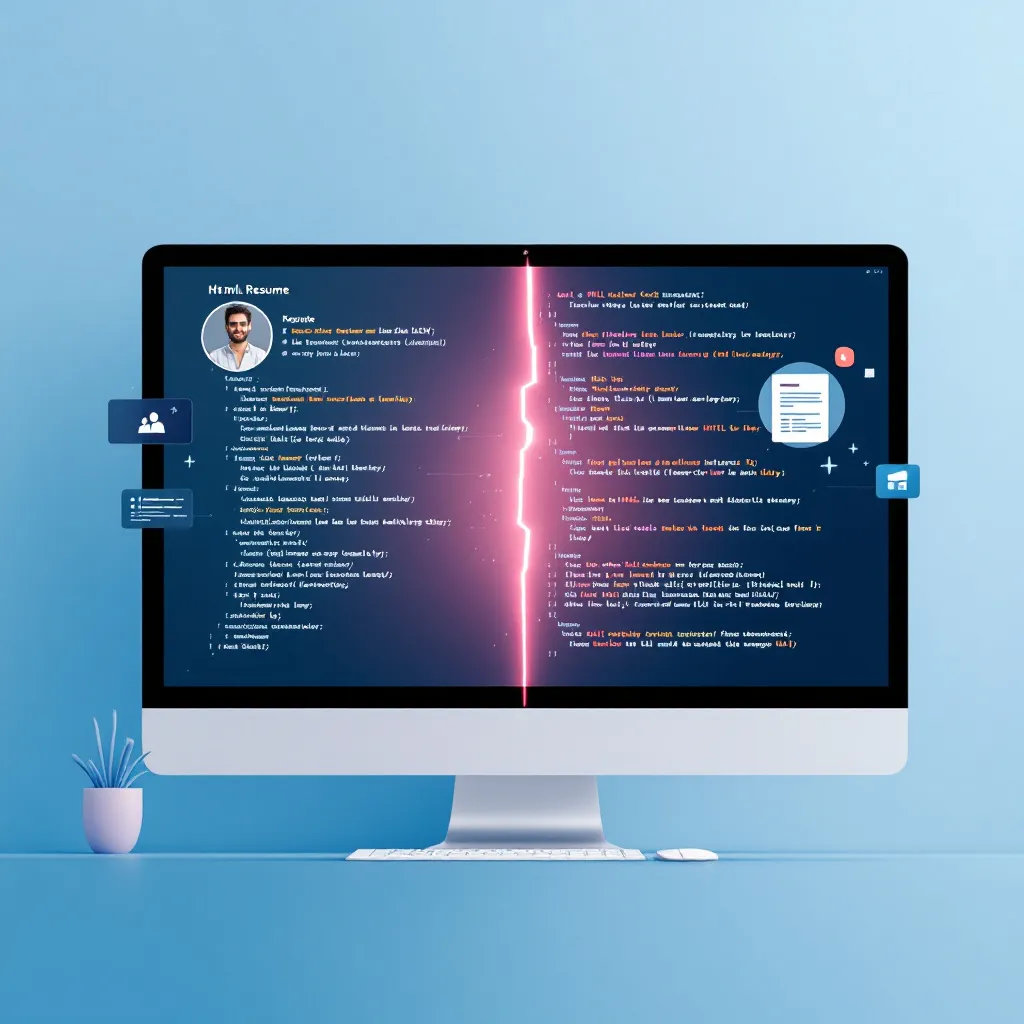In today’s competitive job market, having a standout resume is more important than ever. While traditional PDF resumes remain valuable, creating an online resume using website templates offers significant advantages that can set you apart from other candidates. Let’s explore how to create an impressive online resume that showcases your professional achievements effectively.
Why Create an Online Resume with Website Templates
Online resume websites increase visibility by 73% compared to traditional PDF resumes, according to Wix Blog. This dramatic improvement stems from several key advantages:
- 24/7 Accessibility: Recruiters can view your credentials anytime, with 80% of jobs now filled through proactive recruiting rather than applications
- Enhanced Engagement: Interactive elements like portfolios, video introductions, and project demonstrations create a more compelling presentation
- Improved Discoverability: When optimized properly, your online resume becomes searchable by recruiters looking for specific skills
- Professional Branding: A well-designed online resume establishes a consistent personal brand that extends beyond a single document
As ResuFit experts note, having both a traditional resume and an online version gives you the best of both worlds—something to submit through application systems while also maintaining a comprehensive professional presence online.
Selecting the Right Resume Website Template
Not all resume templates are created equal. The ideal template for your online resume depends on your industry, career level, and personal brand. Consider these industry-specific recommendations:
| Industry | Template Features | Example Templates |
|---|---|---|
| Tech | Code showcases, GitHub integration | BreezyCV, Glitche |
| Creative | Full-screen galleries, animation | Maha, Solonick |
| Corporate | Minimalist layouts, certificate displays | Leven, Hendrix |
When evaluating templates, prioritize these factors:
- Mobile responsiveness: Over 60% of job searches now happen on mobile devices
- ATS compatibility: Even online resumes should follow American resume format sample guidelines for keyword optimization
- Loading speed: Templates with excessive animations may look impressive but can frustrate recruiters if they load slowly
- Customization options: Choose templates that allow you to maintain your personal brand
ResuFit users have found that templates with built-in SEO tools perform 40% better in search visibility, making it easier for recruiters to discover your profile organically.
Essential Elements to Include in Your Online Resume
Your online resume should contain all the elements of a traditional resume, plus additional components that leverage the digital format:
- Professional headshot: Use a high-quality image with appropriate alt-text for accessibility and SEO
- Metric-driven achievements: Showcase results with specific numbers (“Increased sales by 150% through…”)
- Interactive portfolio: Include samples of your work with case studies explaining your process
- Dynamic skills visualization: Use progress bars or charts to illustrate proficiency levels
- Testimonials section: Include recommendations from colleagues, managers, and clients
- Downloadable PDF: Offer a traditional resume format for those who prefer it
For specialized fields like accounting, including specific accounting experience examples with measurable outcomes can significantly strengthen your profile.
Customizing Your Resume Website Template
The most effective online resumes strike a balance between using templates and adding personal touches. Consider these customization strategies:
- Brand colors: Use a consistent color palette that matches your LinkedIn and other professional profiles
- Typography: Select fonts that reflect your industry standards while ensuring readability
- Section organization: Prioritize information based on your career goals and target positions
- Cultural alignment: Adapt your presentation style to match industry expectations (more creative for design roles, more structured for corporate positions)
For those in artistic fields, art resume template customization can involve more creative freedom while still maintaining professional standards.
Technical Considerations for Resume Websites
To ensure your online resume performs effectively, pay attention to these technical details:
- Loading speed: Compress images below 200KB using tools like TinyPNG
- Mobile optimization: Test your site’s responsiveness using Google’s Mobile-Friendly Test
- Security: Implement SSL certificates (available free through many hosting providers)
- Privacy: Consider what personal information to include or exclude for security purposes
- Analytics: Integrate Google Analytics to track who’s viewing your resume and from where
ResuFit provides built-in optimization tools that handle many of these technical considerations automatically, making it easier to create a professional-quality online resume without technical expertise.
Maintaining and Updating Your Online Resume
An outdated online resume can be worse than none at all. Implement these best practices:
- Quarterly updates: Refresh your accomplishments, skills, and certifications at least every three months
- Content strategy: Follow the 30-60-90 day update rule, adding new projects and achievements regularly
- Version control: Create separate versions or sections for different types of positions you’re targeting
- Analytics review: Regularly check which sections visitors spend the most time on and optimize accordingly
Making the Most of Free Options
For those just starting out, free student resume templates offer a cost-effective way to establish an online presence. Many platforms provide basic templates with limited features at no cost, which can be upgraded later as your career advances.
If you’re looking for more personalized assistance, consider affordable resume writing services that can help optimize both your traditional and online resumes.
Conclusion
Creating an online resume using website templates is no longer optional for serious job seekers—it’s becoming an expected component of a comprehensive job search strategy. By selecting the right template, customizing it effectively, and maintaining it regularly, you can create a professional online presence that showcases your achievements and helps you stand out in a crowded job market.
For those who want expert guidance, ResuFit offers AI-powered tools that can analyze your current resume, suggest improvements, and help you build an optimized online version that aligns with industry expectations and recruiter preferences.
Whether you’re a recent graduate, mid-career professional, or executive, an online resume built with the right template provides a powerful platform to showcase your professional story and advance your career.





